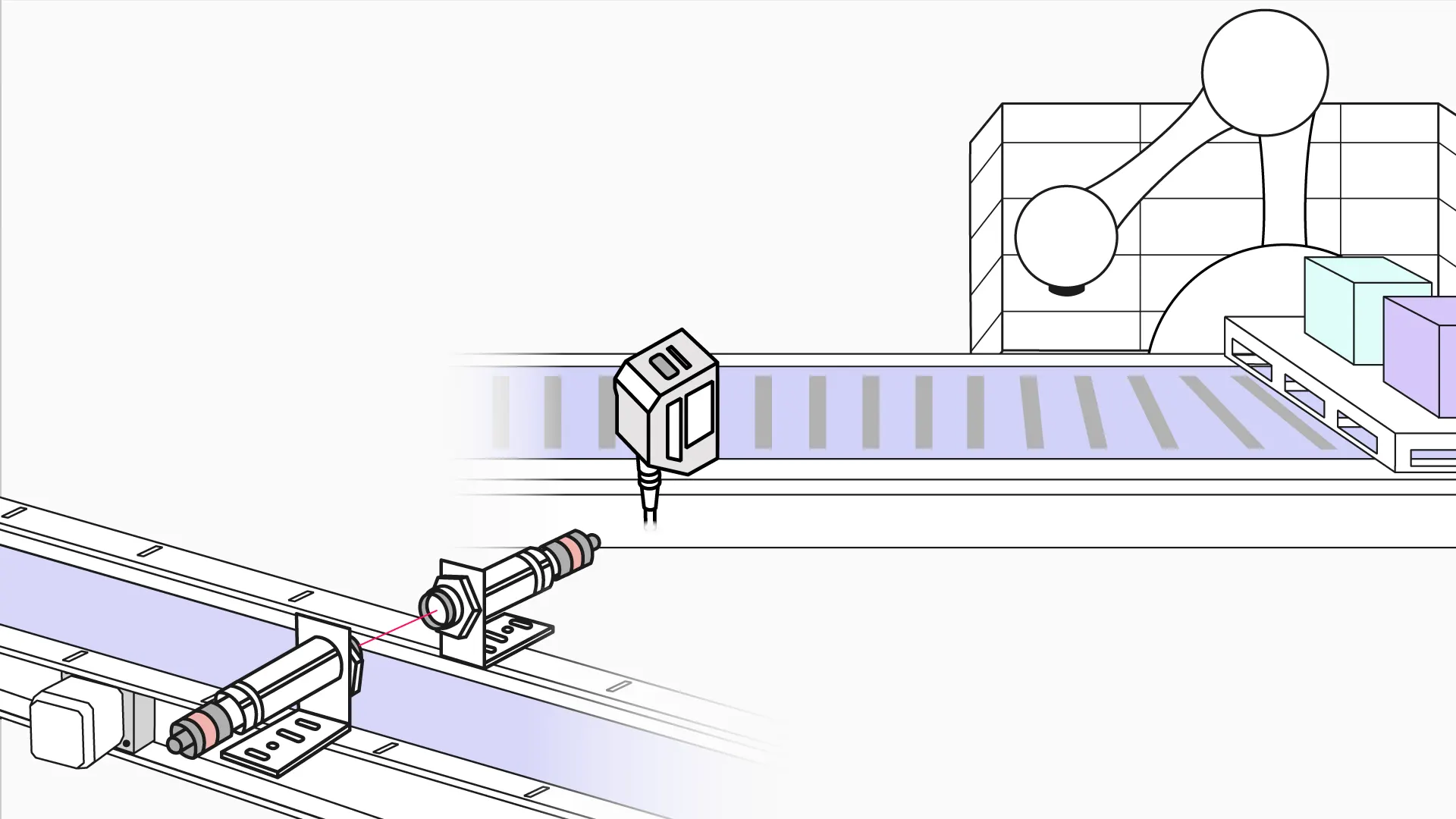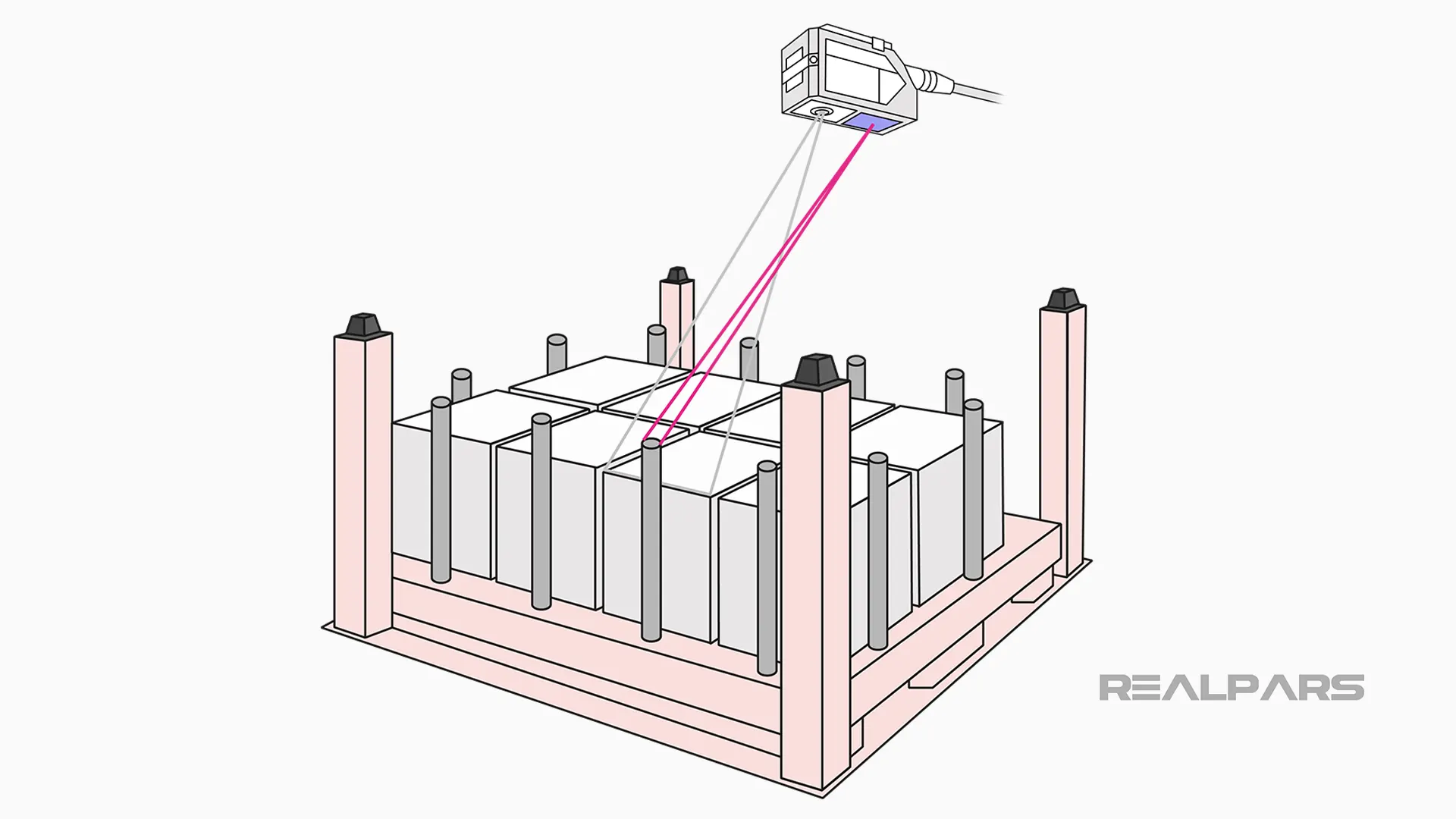Laser Sensor Explained | Types and Working Principles


In this article, I will be talking about laser sensors. I will explain what laser sensors are, the basics of how they work, the different types of laser sensors, and I will give some examples of how laser sensors are used with automation.
What is a laser sensor?
A laser sensor is an electric device that uses a focused light beam to detect the presence, absence, or distance of an object.
The light that a laser sensor emits is a small bright dot, similar to a laser pointer. This dot is bright enough to be easily seen even in direct sunlight. And being able to see this dot easily, makes it easier to set up and troubleshoot the laser sensor.
On some laser sensors, the light can be turned off when the sensor is not being used

How does a laser sensor work?
Now let’s talk about how the laser sensor works. First, the light travels from the sensor to the object. The light then bounces off the object back to the sensor.
The sensor then calculates how long it took for the light to travel to and from the object to determine the distance.

If the object was within the sensor’s range, the output of the sensor will turn on. If the object was not in the sensor’s range the output will stay off.

To set up when the laser sensor output turns on depends on what type of laser sensor you have. If it is just a basic laser sensor, you just turn a dial or a ring on the laser sensor to adjust it from its minimum setting to its maximum setting.
Other laser sensors have a display and buttons on them that are used to configure the sensor’s min/max settings. And other laser sensors require a computer to be connected to them to configure the min/max settings.
Laser sensor output
Depending on what laser sensor you have, the sensor outputs can be normally open, normally closed, NPN, PNP , or analog.
Also depending on the laser sensor, the analog outputs can be zero to ten volts or four to twenty milliamps.

Typically if you are using the sensor’s analog output, the sensor is connected to a PLC analog input card.
An example of when a laser sensor analog output might get used is to check the position of a part before it enters a robot cell.
The sensor’s analog signal is read by the PLC and the PLC displays this number on an HMI screen, along with the range that is considered good.
If the part is in the correct position, it will get released into the robot cell automatically.

But if the part is out of position, an alarm will sound and the part will not release until the part is in the correct position and the reset button on the HMI is pressed. This is an example of when a laser sensor would be used to check distance.
Why use a laser sensor?
Now let’s talk about some of the reasons why you would use a laser sensor.
They work very well in dusty conditions. The brighter light of a laser sensor has fewer issues in dusty environments compared to other styles of sensors.
The bright light of the laser sensor is not affected by other light sources. Laser sensors can even be used in direct sunlight.
With the size of the laser sensor light dot, it works great at detecting small objects. Laser sensors can also be used for precise positioning. Laser sensors can also have a very long working range if needed.
How laser sensors are used?
A lot of the laser sensors made today use twenty-four volt DC power. To use one of these sensors, connect the brown wire to twenty-four volt DC positive. Connect the blue wire to twenty-four volt DC negative.
The black and white wires are the sensor’s output wires. And depending on your needs one or both of these wires will get connected to a PLC input card. With these wires connected the sensor is ready to be set up.

Example #1
Let’s say we have a conveyor and they want to load boxes to be shipped out on one side and have these boxes travel to the other end of the conveyor and stop so the box can be removed by an operator.
So we mount and wire a basic laser sensor on the end of the conveyor where the box needs to stop.
To set up the laser sensor, we set a box on the conveyor where we would like it to stop. We will then aim the sensor at the leading edge of the box and tighten it down. With this being a basic laser sensor, we just turn the dial on the sensor until the output light on the sensor turns on.
To test the sensor that we set up, we remove the box and turn on the conveyor. We then place the box on the running conveyor and see if the box stops where we wanted it to.

Example #2
For another example, let’s say we have a part that gets loaded onto a build pallet. Before the pallet can leave this station, a laser sensor needs to see that a pin has been installed to keep the part from falling off the build pallet.
We are using a laser sensor because the pin is not very big and a laser sensor can be mounted so that it is not in the way of the operator.

Summary
In review, by reading this article you have learned about laser sensors. That they use a focused light beam to detect the presence, absence, or distance of an object.
You also learned that laser sensors are a better choice for dusty or bright light environments and that they can be used on small objects and can have a long working range.
Please let us know if you have any questions about laser sensors or about sensors in general in the comments below and we will get back to you in less than 24 hours.
Got a friend, client, or colleague who could use some of this information? Please share this article.
Learn from
Industry Experts
With a 7-day trial, then €25/month


